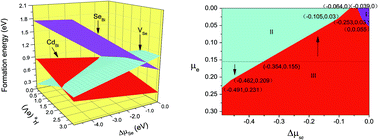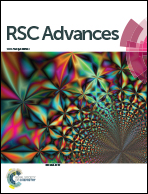Effective Fermi level tuning of Bi2Se3 by introducing CdBi/CaBi dopant†
Abstract
By using a first-principles method within the framework of density functional theory, we study the formation energies of Cd and Ca dopants in Bi2Se3. The calculation results show that CdBi and CaBi are the most stable defects for Cd and Ca dopants in Bi2Se3, respectively. Additionally, both the CdBi and CaBi defects in Bi2Se3 are p-type dopants, with accepter levels at ε(0/−1) = 0.030 eV and ε(0/−1) = 0.028 eV, respectively. Comparing their formation energies with that of the native defects under a different growth condition, CdBi and CaBi can effectively compensate the n-type native defects, VSe and SeBi, under Se-rich growth conditions. It is interesting to note that such compensation effects become weaker, gradually, with the growth conditions changing from Se-rich to Bi-rich. Therefore, a p-to-n or n-to-p type conversion for Bi2Se3 can be achieved by changing the growth conditions. Simultaneously, the Fermi level, which is determined by the charge neutrality condition, can be effectively tuned, which is in agreement with previous experimental reports.


 Please wait while we load your content...
Please wait while we load your content...